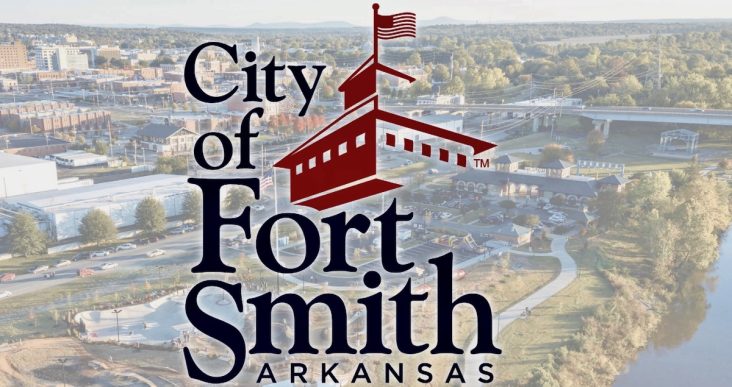Fort Smith officials seek more citizen input on Safe Fort Smith ‘road map’
by June 13, 2024 4:48 pm 208 views

The City of Fort Smith is working on a road map to make city streets safer and needs public input to make certain all problems are adequately addressed. Funding for the study comes primarily from a federal grant.
Sara Copeland with Burns & McDonnell, who the city hired to help develop a Safe Fort Smith comprehensive safety action plan, said they have been working on a transportation safety action plan for Fort Smith that will help the city reduce roadway fatalities and serious injuries.
The city received a $280,000 Safe Streets for All grant from the U.S. Department of Transportation to help pay for a $350,000 street safety study, for which Burns & McDonnell was hired. The city paid $70,000 in matching funds for the study, said Matt Meeker, director of streets and traffic control for the city.
The Fort Smith Board of Directors has made a public commitment to achieve zero fatalities or serious injuries on Fort Smith streets by 2050, information on study’s website states. According to the website, there are approximately 2,500 automobile accidents in the city each year, ranging from minor fender-benders to serious accidents. Each year, about nine people are killed in automobile accidents in Fort Smith, the website states.
“So this plan is the road map to how we can achieve (zero fatalities or serious injuries in accidents). It started by looking at crash data. What are the risky locations in town? We did an online survey to ask people where they felt unsafe or had safety concerns,” Copeland said.
The online survey was completed by 593 people between December and March. Feedback showed that the community felt like Fort Smith streets were fair in terms of overall safety. Survey respondents said the biggest contributing factors to traffic accidents are drivers not obeying traffic laws, driver distraction and speeding. They provided 475 map pinpoints with 209 of those identified as a safety concern.

• Garrison Avenue from Second to 14th streets;
• Rogers Avenue from 46th to 79th streets;
• Grand Avenue from 21st to 37th streets;
• Kelley Highway and 50th Street;
• Towson Avenue from Phoenix Avenue to Raleigh Street;
• Jenny Lind Road from Jackson Street to Louisville Street;
• Rogers Avenue and Albert Pike Avenue;
• Park Avenue from North Greenwood Avenue to N. 35th Street; and,
• Kelley Highway and 32nd Street.
ACTION ITEMS
The safety plan identifies the top four things the city should do next, Copeland said. The first is to coordinate across city departments in public safety on roadway safety initiatives. Key initiatives include: reducing speeding, increasing knowledge on pedestrian crossing and rights; reducing red light running.
“The police department is already doing some public education and initiatives to reduce speeding. So one of things is to keep that focus on reducing speeding, looking out for pedestrians, reducing red light running,” Copeland said.
The plan also suggests updating city policies to promote a safety-centric focus on infrastructure projects when they are constructed.
“There needs to be a safety focus as new streets are developed,” she said. “There are a few places where we think there could be more clarity to tell developers. We also think the city could take another look at assessed distances and where we have pedestrian crossings.”
SAFETY TOOLBOX
The plan also advocates implementing safety improvements at identified priority locations on the arterial and collector roadway network.
The final initiative is to use a local streets safety toolbox to identify solutions for implementation on local streets. The safety toolbox has three sections – targeted improvements to focus on people who are walking or biking, focus on speeding in the street segments and focus on intersections, Copeland said.
“Say in a couple of years, we have a neighborhood street that is getting a lot of concerns about people speeding through an intersection. We could look at a safety toolbox and say, ‘well based on the concerns that the people have identified, here are the improvements that would work.’ The safety toolbox identifies the expected crash reductions based on research from around the country. So they can say these are the improvements we can make that would have the most impact,” Copeland said.
ROGERS, GRAND AVENUE
Some projects in the areas where the most accidents occur might be small while others could be much larger, she said.
“We know ARDOT (Arkansas Department of Transportation) is already looking at a project on Rogers Avenue, so that’s a bigger project,” Copeland said. “We have these nine locations. We identify what types of improvement can be made at these locations based on crashes that occur.”
In the instance of Grand Avenue, many of the accidents involve pedestrians, she said, noting that those are the most dangerous of the accidents.
“That’s a priority for us to address. We have several suggestions that can be done along Grand to help with that. It’s looking at bus stop locations and looking at other places where you need to do some access management or improvements around intersections that make it easier for people to cross but maybe also easier for vehicles moving through the intersection. Each of these (areas) have a variety of ideas that need to be considered,” Copeland said.
City residents can check priorities for safety on the safety study’s website at this link through June 30. The study is scheduled to be presented to the Fort Smith Board of Directors at its July 30 study session.
